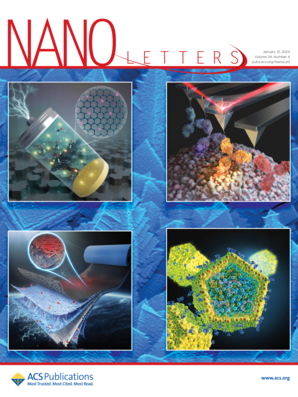Cascade-Targeting Apoptosis via Synergy of TRAIL-Specific Bystander Effect and Mitochondrial Photodamage in Cancer Therapy
IF 9.6
1区 材料科学
Q1 CHEMISTRY, MULTIDISCIPLINARY
引用次数: 0
Abstract
Tumor-specific apoptosis exerts considerable curative efficacy in cancer, particularly with TRAIL, which has been approved in the clinic; however, therapeutic outcome is compromised due to apoptosis evasion and the short half-life of exogenously infused TRAIL. Herein, we propose a synergistic apoptosis strategy of orthotopic TRAIL expression for enhancing the bystander effect and mitochondrial photodamage for intrinsic apoptosis activation. To actualize synergetic apoptosis, we develop cascade-targeting nanoparticles to perform cell-to-mitochondria shuttling, in which TRAIL-expressing plasmid (pTRAIL) is coprecipitated with calcium phosphate on a glycyrrhetinic acid (GA)-modified graphene oxide nanosheet. For apoptosis synergy, GA mediates tumor accumulation of nanoparticles, followed by structure dissociation for efficient pTRAIL release and expression (cascade module I). Thereafter, GA-modified graphene carriers perform mitochondria distribution for laser-triggered photodamage (cascade module II). The nanoparticles yield tumor inhibition of 86.78% in the melanoma model and demonstrate metastasis blocking activity. Collectively, a cascade-targeting apoptosis technology via a combination of TRAIL-specific bystander effects and mitochondrial photodamage provides innovative oncotherapy synergy.

求助全文
约1分钟内获得全文
求助全文
来源期刊

Nano Letters
工程技术-材料科学:综合
CiteScore
16.80
自引率
2.80%
发文量
1182
审稿时长
1.4 months
期刊介绍:
Nano Letters serves as a dynamic platform for promptly disseminating original results in fundamental, applied, and emerging research across all facets of nanoscience and nanotechnology. A pivotal criterion for inclusion within Nano Letters is the convergence of at least two different areas or disciplines, ensuring a rich interdisciplinary scope. The journal is dedicated to fostering exploration in diverse areas, including:
- Experimental and theoretical findings on physical, chemical, and biological phenomena at the nanoscale
- Synthesis, characterization, and processing of organic, inorganic, polymer, and hybrid nanomaterials through physical, chemical, and biological methodologies
- Modeling and simulation of synthetic, assembly, and interaction processes
- Realization of integrated nanostructures and nano-engineered devices exhibiting advanced performance
- Applications of nanoscale materials in living and environmental systems
Nano Letters is committed to advancing and showcasing groundbreaking research that intersects various domains, fostering innovation and collaboration in the ever-evolving field of nanoscience and nanotechnology.
 求助内容:
求助内容: 应助结果提醒方式:
应助结果提醒方式:


